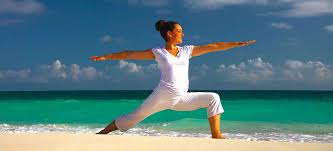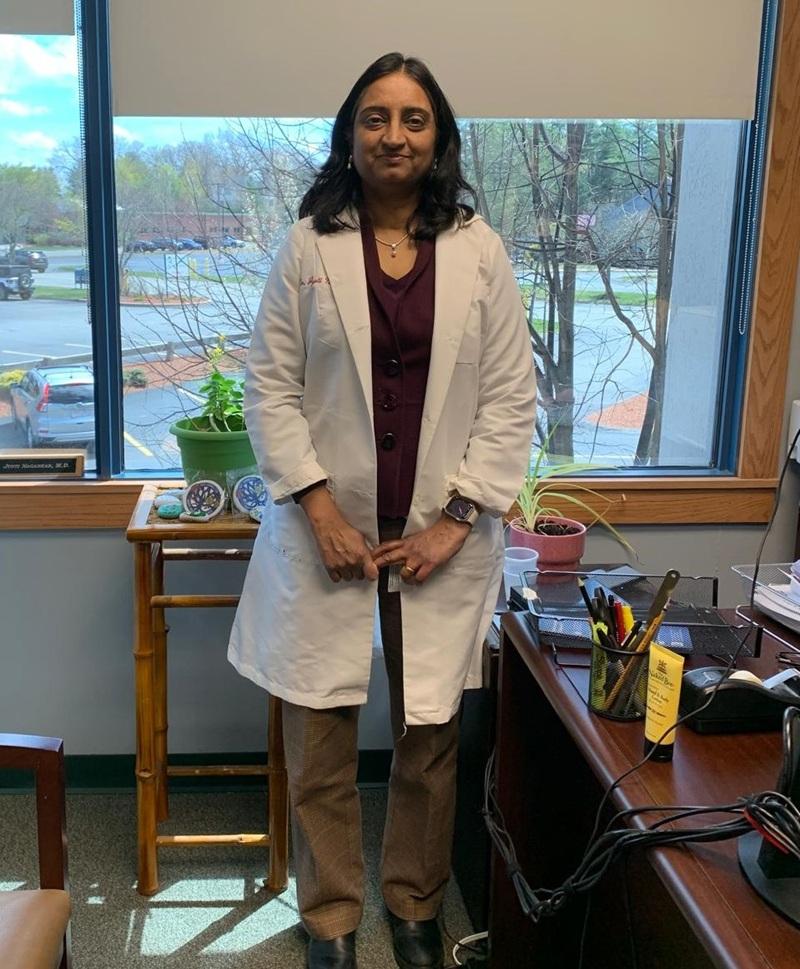Wellness Column

A Yoga Garden of Peace By Tara Rachel Jones, M.Ed., RCYT, Founder and Principle Teacher of Flower Yoga, RCYS
What is A Yoga Garden of Peace?
Teaching yoga effectively with toddlers, children, youth, teens and families takes three major components:
- A “calling” or an “Aha” moment arises in distinct ways such as dreams, experiences, vision quests, studying a spiritual philosophy amongst many others… We know as yoga teachers, transformation arises through practice. We find ourselves saying, “ If I can find peace, I want to bring it to others.” The gemstone of the practice is the desire to share it, possibly, with other adults, but—you love toddlers, children, youth, and teens! You say to yourself, “How incredible it would be for young people to have this practice as an active part of their lives!” You have experienced the effectiveness of the “tools” of yoga practice and you “know” it works. This “inner knowing” becomes the ignition for your mission to teach yoga to this unique population!
- Skills: Whether or not you have a distinct professional background working with young people, you have to get trained to teach yoga. During the training, you learn about what makes a yoga class for young people quite different from teaching adults. You also discover that each stage of human development has a particular approach when it comes to creating an age-appropriate yoga class experience. You learn a wide range of techniques, games and strategies, do your practice teaching and get certified.
- Experience: Experience is your only true teacher and learning lab. During this time, you harness the absolute meaning of humility, flexibility, accountability and relationship. Embarking on the journey, you realize what you have yet to learn. Especially, in moments of challenge, you might tell yourself, “My tool chest is full, but getting the class to unfold is puzzling me.” We have all been there in some way, wondering how to get the whole group or an individual child to behave, to stay with the class and to get the games and techniques to take effect like you practiced in your training! Yes, even the most experienced teachers can encounter these moments. It is at this juncture; the YOGA of teaching yoga to children begins!
Re-Defining Discipline
When invited to write this article about “Behavior and Child Development,” I began to ponder the phrases classroom discipline vs. behavior management. The word discipline comes from the Latin root-disciple defined as pupil, student, and follower. In the teachings of yoga, the disciple “falls to the feet of the Guru.” The Guru (Sanskrit name for teacher) has a task: to guide the student to find the “teacher within.” The Yogi sees discipline as a path to know thyself, rather than a forced modification made from the outside. The word behave has several intriguing meanings; conduct oneself, to act properly and to act or react under given circumstances. By definition, both words truly describe similarly that the source of self-regulation comes from “within.” While it makes sense to imagine the seed of true focus to come from our inward being, it can be an overwhelming dilemma when working with young people. They have not yet developed the capacity to grasp this subtle experience!
Our job is not to make them GET IT, but to weave an intricate garland (in Sanskrit-Mala) of experiences that intersect with both the collective nature of the human being at a given age and see each one as an unfolding individual. Yoga is a life long endeavor. It is a way of life that honors the present moment as fuel and foundation for learning from the past, while simultaneously; harnessing the courage to move forward with confidence in one’s self, others and the world at large.
Behavior Management is, therefore, viewed by the Child/Teen-Yoga Teacher as an opportunity to become present, to become acutely aware of how the children are reacting/responding to the yoga class and modify strategies that truly engage them. Children need structure, boundaries and follow-through. This is not a simple task for the teacher because it takes years of trial and error to find what “works.” Perseverance and Faith are derived from the distinct “calling” to do this work.
Engagement Recipe
No one can be you, nor be able to give you the wisdom that arises from years of experience, but recipes are a good start! Here is a Flower Yoga recipe for one way to weed your child/teen yoga garden!
At ALL ages, the senses play a powerful role in the regulation of the physical body, emotions and cognition, henceforth, behavior. There are four foundational senses that lay the groundwork for an engaging and well-managed child/teen-yoga class.
- The Sense of Touch relates to boundaries in the yoga environment such as: the yoga mat, any and all props. Inner-Touch relates to the “rules of the class that keep us safe. My rules are simple: Look (sense of sight-focus on safe ways to move the body), Listen (sense of hearing: cues, songs, rhythmic language storytelling) and Stay together (imitation of a worthy role model: the teacher). We do the practice together to maintain safety and create community.
- The Sense of Life conveys the consistent and predictable rhythm of the class. When we know what is happening, we can relax and become present. It is from that place that that creative qualities of joy, spontaneity and surprise percolate in a safe way. For example, you might have a place in your class rhythm where you tell a story. In my class, it always happens after the sun-salutations. The children expect a story, but the story can change within an expected class structure.
- The Sense of Self-Movement is associated with proprioception. Connie Helms, movement educator and founder of Balance in Childhood and Adolescence states, “When orientation is experienced first hand, then children build an internal map of what is where – in their body and in their world.” When we teach postures to children, give consistent cues. The Flower Yoga approach to teaching asanas is definitively related to earlier stages of reflex and movement integration. If you are not using a visual system yoga mat, the children need a series of baseline posture that give them a sense of special orientation. For example, “To make the Dog pose, start by putting your hands down, knees down and belly up (cow pose). Tuck toes down and lift knees up (dog).” Scaffold new poses over “known” poses and children gain a sense of mastery of where to place their bodies in space. As they build this skill, children activate the inner muscle needed for self-movement- Willpower!
- The Sense of Balance correlates with physical balance, spatial orientation and emotional regulation transmitted to the brain via sensory receptors inside the inner ears. Exploring balance in a yoga class on a physical level can be done practicing postures on one foot, but also postures and movements that differentiate the right and left side of the body, up/down and front/back.
Have a clear understanding of Child/Teen Development at different ranges. Be diligent in your study and become proficient in noting observable patterns in human development and human nature. As you mature with this skill, you will walk into any situation and be able to meet the challenge with confidence and the ability to lead the class in a meaningful experience.
EARLY Childhood (0-6year-olds)
Highlights for behavior management
Finger Plays
Rhyming/Movement Songs
Circle Games
Puppetry
IMAGINATION
SENSORY EXPLORATION AND PLAY WITH PROPS
Simple Breathing
Repetitive and Rhythmic STORIES
LARGE ROUND MOVEMENTS
“Follow-able” yoga poses and movement games
Consistent Cues and language on how to get in and out of poses
MIDDLE Childhood (7-11year-olds)
Highlights for behavior management
Challenging and Rhythmic movement Games with props
Speech verses with eloquent language and uplifting folk songs
Distinct and Simple Breathing Practices
More articulate posture cues with distinction of left/right
Myths, Legends, Folk Stories that leave an inner-character impression
Games/Partner Poses
Artistic Expression
ACTION/REST
YOUTH (11-14yrs) /TEEN (15-17yrs)
Highlights for behavior management
ACTIVE REST
Inspiring Stories that address inner/social/academic/family/life challenges
More articulate postural cues
Explanation of the both physical and mental posture benefits
Group/Partner Poses
Artistic Expression
DEEP RELAXATION
Putting the recipe into PRACTICE!
You have ignited your awareness with the underlying features (listed above) that will engage all ages, you walk in to teach yoga, and self-regulation is NOT happening – it’s a constant challenge to get the group together. No one is “behaving.”
Do not give UP! You can do it! They are not behaving because they NEED something: inner/outer Order!
Keep your class structure, be consistent and make the YOGA in every moment of interaction, even the TRANSITION of creating the order itself. That may be the yoga needed in that given moment. You maintain a clear vision of where you will take this group,
- Ground: Sometimes I have a group that comes into a yoga space, ready to sit on the mat and breath and we do this. Others need an active movement game/song/verse or finger play to bring the group together…I am clear about my expectations, even in this short experience, by making the actions themselves enticing to the group of children I am working with. If I need to assign mats, place the mats in one single row facing me rather than the idyllic circle, I will do this in order to create a successful initiative.
- Center: I always have a ritual that signifies a silence, which is preceded by imaginative or guided breathing. Guided meditation and inner-character goal is set at this time. It is a threshold for entering the “yoga” space.
- Action: Yoga Asana class has a simple order with the goal of including a group game and at least one partner pose. I usually have a set time by which I want to place this activity and will often offer these privileges once the children have developed the capacity to stay connected to the class rhythm.
- Rest: There is a distinct ending with an imaginative journey and guided relaxation. I use a consistent thread of language so that the child/teen can rest into the routine of the relaxation process. They fidget at first, but over time, they can relax because they internalize the process.This can be as short as 1-2 minutes and as long as 10-12 minutes.
Even when the class has a bumpy or less than smooth start, I use the strength of consistency, repetition (games/poses/stories that support harmonic patterns of social/emotional and physical self-regulations) and flexible determination to establish the behavioral tone that makes the class manageable.
There are times when children have inner deregulation that stirs up their behavior in unfavorable or difficult ways that make maintaining the class routine less tangible. Then, I rely on my understanding of the four foundational senses, as a compass for bringing to the group or child what is needed.
COMMUNICATION
Although you have taken a children’s yoga training, which encompasses a yoga tradition, be sensitive and respect the culture of the population you are serving. If you are working in a school, get to know the school philosophy and perspective of the teachers. In turn, educate the school, organization or parent-body about the benefits of yoga for children/teens and acknowledge your desire to co-create a successful program for everyone.
- ADAPT the teachings, its tools and techniques in a way that is accessible to the environment you are working in.
- ADJUST yourself and be flexible with your strategies while remaining steadfast with your program effectiveness. You will likely learn more from your experience that, what may work with one group of children, does not with another. At the same time, you will discover a thread of repetitive processes that elicit a positive and similar response of the age group you are working with. These pieces become a staple in your teaching routine.
- ACCOMMODATE (have compassion and empathy) to all aspects and factors that have an influence on child/teen behavior. Here is a sample list: the beginning of the school year, change in weather pressure, holidays, ending of semester schoolwork, tests, death in a family, new sibling, moving to a new home, sensory integration challenges, social issues, trauma, stress, anxiety, mental illness, bullying…the list goes on. All of this influences the dynamic of the yoga class. KNOW your limits! Access help when you need it and collaborate with your colleagues who encounter similar challenges.
Ultimately, the management of any group relies upon your response to what is happening and how you redirect it. Knowing the developmental needs and capacities of the group of young people you are teaching, gives you the ability to MEET them when they are unclear about how to ground themselves. Establishing your inner realm in this direction, you will plant A YOGA GARDEN OF PEACE.

Dr. Jyoti Nagarkar MD Internal Medicine Lead Physician- Montachusett IM Instructor - UMass Medical School, Worcester, MA.
Preventive Health Screenings
It is rightly said, “Prevention is better than cure.”
Nowhere is this more applicable than in the early detection of diseases—allowing treatment to begin before complications develop.
As a primary care physician practicing for over 30 years, I have seen time and again how early detection has saved lives. In this article, I will focus on screening for the most common chronic health conditions and cancers.
When a patient visits the doctor’s office, checking vital signs is routine—and measuring blood pressure is a key part of that. It helps detect hypertension, which is diagnosed when blood pressure is consistently above 130/80 mmHg. Elevated blood pressure does not always cause symptoms. However, it is often called a “silent killer” because it can quietly damage major organs, including the heart, kidneys, and eyes. It is also a major risk factor for stroke and heart attacks. Once diagnosed, high blood pressure can be managed through diet, exercise, lifestyle changes, and medications if needed.
Screening for diabetes is recommended in all adults who are overweight or obese. A simple blood test can detect diabetes by measuring fasting blood sugar or hemoglobin A1C, which reflects your average blood sugar over the past three months. Diabetes is typically diagnosed if your fasting blood sugar is above 126 mg/dL or your hemoglobin A1C is 6.5% or higher. Some people may experience symptoms such as increased thirst, frequent urination, weight loss, or blurred vision—but not everyone has symptoms. That’s why screening is crucial. Diabetes can be managed with lifestyle changes, including reducing carbohydrate intake and exercising regularly, along with medications if needed. If left untreated, diabetes can cause long-term damage to organs, leading to blindness, kidney failure, nerve damage, and other complications.
Cancer screenings are equally important. Early cancer detection is associated with higher cure rates and better outcomes. The U.S. Preventive Services Task Force (USPSTF) recommends specific cancer screenings.
Breast cancer is the most common cancer in women, affecting about 1 in 8 women. While some cases are linked to genetics, the majority occur without any family history. The USPSTF recommends screening mammograms every two years for women aged 40 to 74. Women with a family history of breast cancer may need to start screening earlier and may be tested for BRCA1 and BRCA2 gene mutations. These genes increase the risk of both breast and ovarian cancer, and appropriate genetic counseling and additional screenings may be necessary.
Cervical cancer is the fourth most common cancer in women globally. It is screened for using a Pap smear. The USPSTF recommends Pap smears every three years for women aged 21 to 65. Between the ages of 30 and 65, it’s also recommended to add HPV ( human papilloma virus) testing. Alternatively, women may opt for co-testing with both the Pap smear and HPV test every five years.
March is National Colorectal Cancer Awareness Month. For individuals without symptoms or a family history of colon cancer, screening should begin at age 45. This can be done through a colonoscopy or stool-based tests such as Cologuard or the FIT test, which detects blood in the stool. Colonoscopy involves taking a bowel preparation the day before and undergoing the procedure with a gastroenterologist. If polyps are found, they can be removed during the procedure. Cologuard, on the other hand, detects abnormal DNA in stool and can be done with a sample collected at home.
Lung cancer screening is also important. The USPSTF recommends annual low-dose CT scans for adults aged 50 to 80 with a 20 pack-year smoking history who currently smoke or quit within the past 15 years. This test can help detect lung cancer at an early, more treatable stage.
These screenings can help identify health issues before they become serious and give you a greater sense of control over your health.
While the above are general screening recommendations, individual risk factors and health history vary. You should discuss personalized screening needs with your primary care physician during your annual physical.
To learn more, visit the USPSTF website for a full list of recommended screenings:
